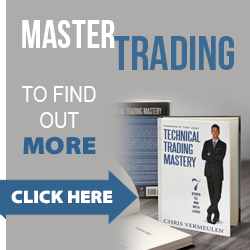The Four Biggest Mistakes by Stock & Futures Traders – Part II
This part two of a five part series of the four biggest mistakes traders and investors make which costs them time, money and usually self-confidence when trading stocks, ETF’s or futures trading strategies.
The Four Biggest Mistakes
1. Lack Of A Trading Plan – Part I
2. Using To Much Leverage
3. Failure to Control Risk
4. Lack Of Self-Discipline
Mistake # 2 – Using Too Much Leverage
With this section talking about leverage I am mainly going to be referring to futures trading because futures provides the most leverage. Anytime I talk about futures trading with someone, more times than not they either say they do not trade those things, or they tune out all together because in their mind its crazy and risky.
While there is no question that futures can be volatile at times, what individuals do not understand is that it’s not the volatility of the market that cause problems. It’s proven that most large cap big name stocks actually have more volatility than the majority of futures contract whether it’s the SP500, wheat, corn, gold, oil etc… The problem is the amount of leverage one used with their money.
Understanding Leverage
The difference between trading stocks and futures is the amount of capital required to enter a trade. While this could be a very long and detailed section with examples of leverage, I am going to keep things simple and short cause it’s really not that difficult.
Using an example of a trader which we will say his name is “Dave” who wants to trade the SP500 index with their risk capital here are two examples that show how leverage drastically changed the outcome of a position.
Dave has a $10,000 account, and wants to swing trade the SP500 index.
Option #1: He buys $5000 worth of the SP500 ETF (SPY). And if the SP500 rises in value by 3% Dave would see a $150 gain on his trade. This ETF has no leverage and follows the performance of the stock market.
Option #2: Dave decides to buy 1 ES mini futures contract which is the SP500 Index futures contract. Using the same numbers as the previous option, the SP500 rises in value just 3%. How much money did Dave make on this trade? He made a whopping $2,625 on the same move that the ETF did, how is that possible?
Let me explain, when you buy a non-leveraged ETF like the SPY with $5000, you are literally only trading with a $5000 investment. But with futures, when you buy one ES mini contract which is worth roughly $5000, you are actually controlling roughly $75,000. So think if it as 17.5x leverage on your money.
So that 3% gain in the stock market is based off a $75,000 investment which is how you get $2625 or a 52.5% return on your money.
Futures trading in my opinion is not for beginner or intermediate traders. The only way your money should be involved with futures is if you truly understand how the market move and have strict money management rules, or us a system that trades and managed positions for you. Remember, leverage is a double edge sword that can make you wealthy or broke quickly if not traded appropriately.
Why Do Traders Make Mistake #2?
The simple answer is mainly because of “ignorance”. I’m not saying most traders are ignorant, im just saying most individuals are unaware of the mount of leverage involved with futures trading or even the 2x and 3x leveraged ETF’s.
People who are used to putting up $10,000 of capital to buy $10,000 of stock/ETFs often assume they are doing the same with futures. Little do they know, that $10,000 position in futures is actually controlling $170,000 and in some cases up to $330,000 in capital.
Another problem is that most brokers will not tell you when you are over leveraged. Brokers make money on trade commission’s so it’s not too often they tell you to trade less and watch your leverage levels.
How to Avoid Mistake #2

Of course trading with leverage come increased trading emotions. This is one of the reasons why automated futures trading systems have become so popular. Having system (mechanical trading system) can eliminate a vast majority of emotional and psychological issue us as humans struggle with.
Using To Much Leverage Trading Conclusion:
In short, if your trades will typically have a drawdown of say 20%, then you must be sure your account has enough money to be able to enter the same size position after lose 20% or your account. If you will not have enough money left to keep trading then either adjust your strategy or deposit more capital.
To get a solid feeling of how leverage works I suggest spending 20 minutes and play with a calculator and play with the potential gains or losses using various leveraged instruments like the 1x, 2x, 3x exchanged traded funds, and also futures contracts like the ES mini which is $12.50 per tick, or $50 per point.
I do provide trade ideas and my position sizes for all the trades I take at my ETF and futures trading newsletter www.GoldAndOilGuy.com
Stay tuned for Part III – Failure to Control Risk
Chris Vermeulen
